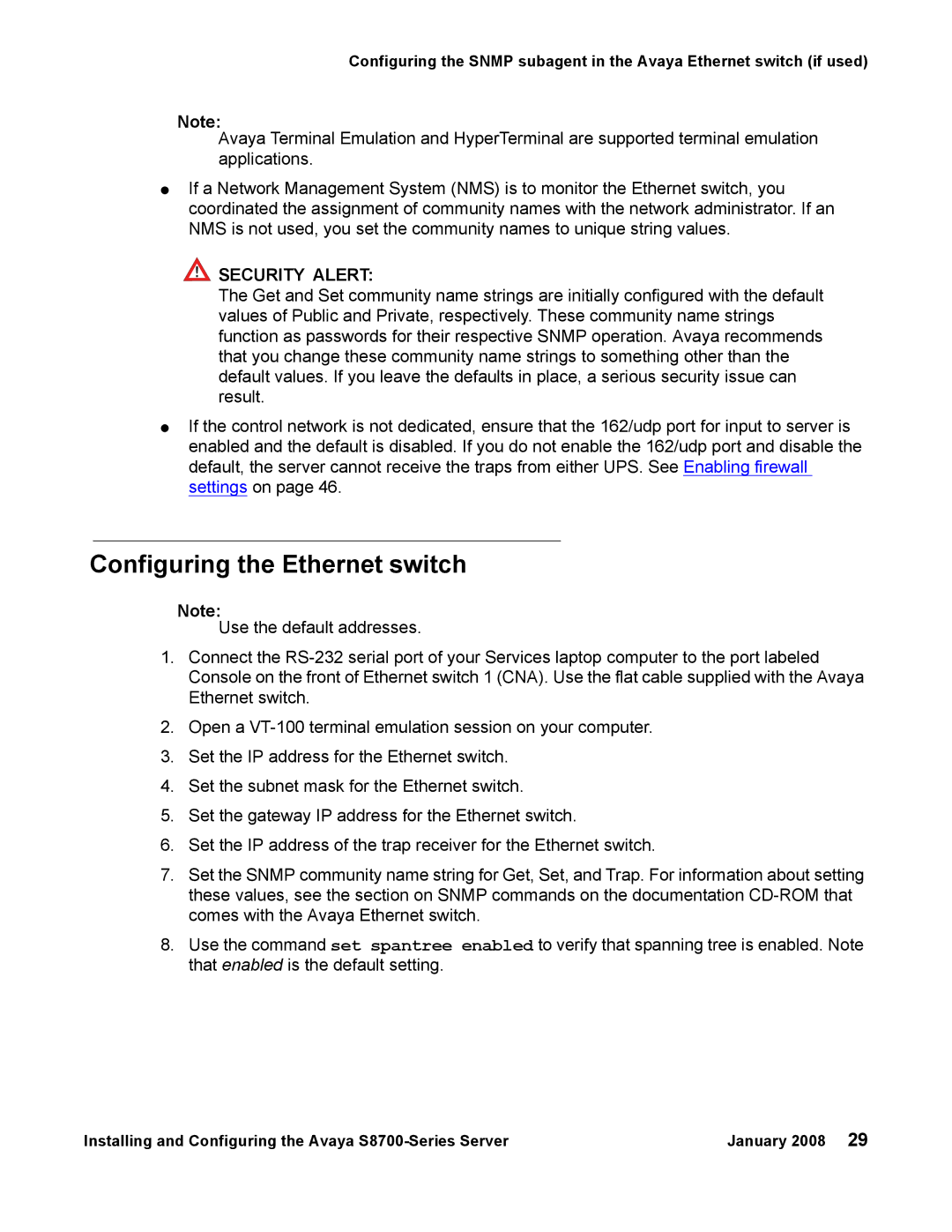
Configuring the SNMP subagent in the Avaya Ethernet switch (if used)
Note:
Avaya Terminal Emulation and HyperTerminal are supported terminal emulation applications.
●If a Network Management System (NMS) is to monitor the Ethernet switch, you coordinated the assignment of community names with the network administrator. If an NMS is not used, you set the community names to unique string values.
!SECURITY ALERT:
The Get and Set community name strings are initially configured with the default values of Public and Private, respectively. These community name strings function as passwords for their respective SNMP operation. Avaya recommends that you change these community name strings to something other than the default values. If you leave the defaults in place, a serious security issue can result.
●If the control network is not dedicated, ensure that the 162/udp port for input to server is enabled and the default is disabled. If you do not enable the 162/udp port and disable the default, the server cannot receive the traps from either UPS. See Enabling firewall settings on page 46.
Configuring the Ethernet switch
Note:
Use the default addresses.
1.Connect the
2.Open a
3.Set the IP address for the Ethernet switch.
4.Set the subnet mask for the Ethernet switch.
5.Set the gateway IP address for the Ethernet switch.
6.Set the IP address of the trap receiver for the Ethernet switch.
7.Set the SNMP community name string for Get, Set, and Trap. For information about setting these values, see the section on SNMP commands on the documentation
8.Use the command set spantree enabled to verify that spanning tree is enabled. Note that enabled is the default setting.
Installing and Configuring the Avaya | January 2008 29 |
